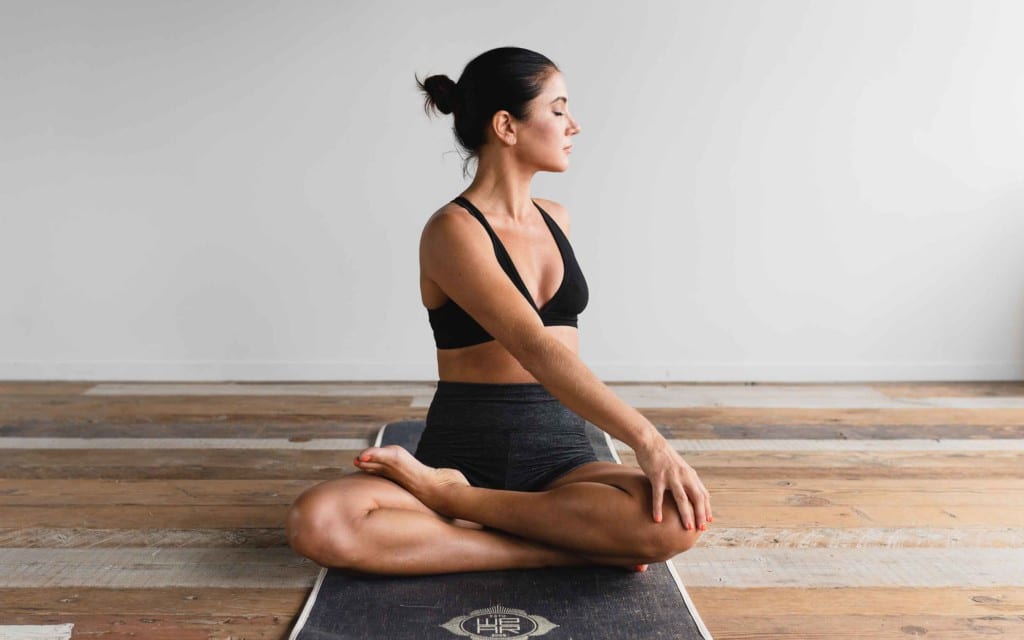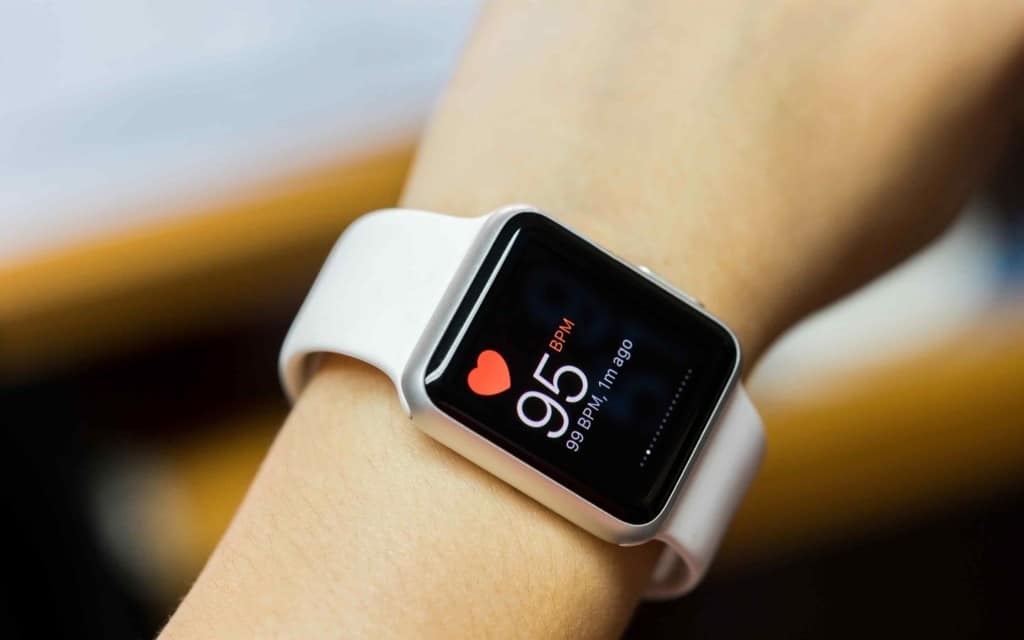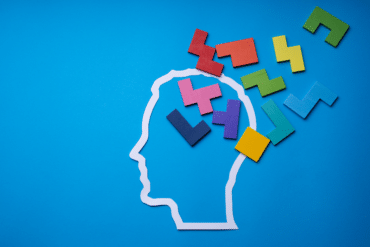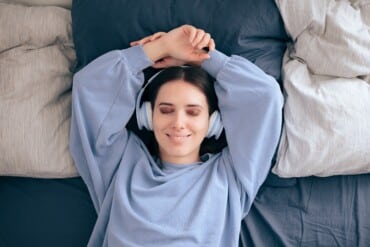If you’ve ever found yourself searching for the phrase “How to fall asleep” on Google, you’ll know that there are endless tips out there.
Sometimes, something simple, like making sure that you don’t eat after 6pm, or renewing your bedding can make a world of difference to your slumber.
However, if you’re already suffering from a significant sleep disorder, you may need a lot more than just some relaxing teas and a hot bath before bedtime.
Medications and sleeping pills present a whole slew of problems. There’s a good chance your doctor will recommend a psychological treatment before medication. Thus avoiding addiction and dangerous side effects.
Cognitive behavioural therapy is the most common psychological treatment option for sleep disorders.
This strategy focuses on your thoughts and behaviours. It can be broken down into a multitude of different therapies, ranging from thought management, to stimulus control.
Today, we’re going to be looking at the impact of biofeedback therapy on sleeping patterns.
How can it work to transform your evening routine?
What is biofeedback therapy?
Let’s start with the most obvious question: What is biofeedback therapy?
Biofeedback therapy is a component of cognitive behavioural therapy for sleep.
While things like stimulus control fall into the “cognitive” part of the treatment routine, biofeedback is more focused on the “behavioural” aspects.
This kind of treatment concentrates on educating you about your mind and body. With this knowledge you can make positive changes to your sleep routine.
Usually, biofeedback therapy and progressive relaxation go hand-in-hand in the CBT world. That’s because biofeedback is all about using the knowledge of your body and mind to adjust the way that you behave.
With relaxation therapy, you progressively relax your muscles from your head down to your feet. This exercise makes you more aware of the tension that you’re holding throughout your body.
Just as relaxation therapy for insomnia helps you to let go of some of the tensions that you didn’t even know you were holding onto, biofeedback gives you a closer insight into what your body does when you go to bed each night.
The main difference is that biofeedback therapy takes advantage of sensors placed on your skin to track certain rhythms.
Biofeedback exercises are often used during sleep studies to help specialists track things like muscle tension and brain rhythm.
Specialists can teach you how to understand the information that your sensors collect. You can use it to encourage things like progressive relaxation and deep breathing to reduce tension.

In simple terms, the biofeedback for insomnia technique is based on the concept that knowledge is power.
If you know exactly how you’re breathing, how much you’re sweating, and what your muscles are doing when you go to bed each night, it stands to reason that you’ll be able to better control your physical responses to stress.
While biofeedback doesn’t work for everyone, it can be a useful first stage in many cognitive behavioural therapy treatments. It allows you to get to the core of what’s causing your issues with sleep on a physiological level.
Biofeedback for insomnia: Types of feedback
There are plenty of people that have already begun to discover the benefits of biofeedback therapy on their own, even without the guidance of a sleep specialist.
That’s because the technology landscape has begun to produce a multitude of wearable and mobile devices that can track sleep metrics for you.

Sensors placed under your mattress can track everything from movement to sleep stages. Then you know exactly which parts of your slumber routine you need to work on.
There are even components of biofeedback that can track things like breathing and emotions too.
Some of the most common types of biofeedback training include:
EMG biofeedback
Otherwise known as electromyography feedback, this kind of biofeedback therapy measures your muscle tension.
Sensors are placed on major muscle groups — such as the ones in your forehead and neck. These sensors determine how much tension you experience when you go to bed. This could assist with relaxation techniques and meditation.
Respiratory biofeedback
If you suffer from problems like sleep anxiety, then there’s a greater chance that your breathing pattern will be rapid and shallow.
If this is the case, you could be keeping yourself awake with rapid breathing without realising it.
Respiratory biofeedback helps you to determine when your breathing patterns could be harming your chances of a good night’s sleep.
Neurofeedback
Neurofeedback for sleep is a specific application of biofeedback. Since the electrical activity in the brain reflects your state of mind, patients who are very stressed or anxious can often find it difficult to relax.
During a neurofeedback session real-time audiovisual feedback is provided based on normalized values. The client will be rewarded in the form of maybe a certain type of music playing, when obtaining the right type of brainwaves.
Hence neurofeedback focuses on optimizing the brain and mind. The brain is tought to use relaxation strategies to soothe the mind.
Your doctor might recommend a relaxing tea or a hot bath before you sleep to get you to have the right type of brainwaves.
Thermal biofeedback
Finally, the skin temperature in your feet and hands can vary according to your sympathetic nervous system. High levels of stress can produce cold or cool skin, while relaxation leads to warmer skin temperature.
With thermal biofeedback therapy, experts can determine how you feel in any given moment. Once again, this can assist in figuring out the triggers for stress when people go to bed.
Biofeedback training: Adopting a routine
As mentioned above, biofeedback for insomnia revolves around the concept of using information about the body and mind. Then create a relaxation strategy for sleep.
If you know exactly what triggers stress responses in your body when you go to bed, you can put strategies in place to calm yourself.
One of the most common recommendations that sleep specialists will offer when using biofeedback information, is that you should adopt a routine that supports good sleeping habits.
Many of us already have a small routine that we stick to before bed. We’re brushing our teeth, listening to music, or having a bath.
Adjusting that pattern could help you to overcome feelings of anxiety, when you’re ready to rest.
If your thermal biofeedback therapy shows you’re often clammy and cold when you go to bed, it might be because you feel anxious.
The solution is to have a hot bath to regulate your temperature before you climb under the covers.

If you notice that your brain activity is particularly high, then your doctor could suggest using journaling techniques. It might be to write down your worries, so you can ease your mind and get ready for bed.
Biofeedback for insomnia is all about strengthening the connection between the mind and the body. You can also put strategies in place to calm yourself.
Although it might take a while to find a strategy that works for you, eventually, you’ll end up with a routine that’s ideal for creating the peaceful atmosphere you need for sleep.
Sometimes, the kind of biofeedback therapy that you use at home can even be very simple. For instance, you could use a smartwatch to monitor your heart-rate.
Whenever you notice a spike in your heart rate, you can practice your relaxation strategies. This will help with not just insomnia, but also feelings of stress too.
Many therapists recommend biofeedback for anxiety, as well as sleep.
Could you benefit from biofeedback therapy?
Anxiety, stress, and other emotional responses are some of the biggest causes of sleep deprivation in the modern world.
If you’re too busy worrying about what’s going to happen at work tomorrow, then you can’t also relax into the perfect mindset for a good night’s sleep.
Although there are techniques you can use for relaxation, including yoga and meditation, it’s hard to put those measures into place. Unfortunately, even just following a regular routine can be impossible in todays world.
Many of us don’t even realize how stressed we are until we take a second to slow down and notice our physiological responses. How’s our breathing doing, our body temperature, or the like.
Biofeedback therapy puts you back in touch with your body. As well as the physical responses you have to issues like stress and anxiety.
With biofeedback training, you can learn to recognise how certain anxiety responses are making it harder for you to relax or fall asleep.
Eventually, you can even put strategies in place that will help you to deal with anxiety in a healthy way, wherever you encounter it.
Of course, like any aspect of cognitive behavioural therapy, biofeedback for insomnia takes time to work.
You need to be patient with yourself and take the time to listen to your body and mind more carefully each night.
If you’re not already a mindful person, then it can take a while to fully make the change.
In the meantime, your doctor might be able to recommend if there are other steps that you can take to improve your issues with insomnia alongside your biofeedback routine.
Siestio. Sleep Matters.
Medical disclaimer
You must not rely on the information provided on our website as an alternative to medical advice from your doctor or other healthcare professionals. For more information read our full disclaimer here.







